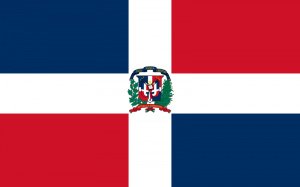
The indigenous people, the Tainos, were completely wiped out within 200 years of the conquest due towars, epidemics and brutal working conditions. Large numbers of African slaves replaced them as laborers and in the process brought their language, which can be found in words, manners of speaking, accents, colloquialisms and intonations. This is a linguistic feature that The Dominican Republic shares with the rest of the Caribbean.
It was from Africa where the Yoruba syntax of Nigeria came from, which can be seen in the inverted order of words in questions: “¿Adónde tú vas?”, “¿Qué tú quieres?”. It is also the source of another phenomenon called “lambdaización”, which is to change the implosion at the end of a syllable with an “l”. Thus, “cartel” becomes “caltel”, “caminar” becomes “caminal”, etc.
Nowadays, the different ways of speaking are marked by social class. The upper class aspirate the letter “s” (“ahpira”, “vamoh”, “ehpecial”) and pronounce the letter “k” in words like “objeto” (okjeto), “observar” (okservar). The lower class tends to shorten and join words (“vamoacer” por “vamos a hacer”, for example).
Perhaps the most curious phenomenon is the linguistic influence that comes from the United States.Loaned words become new words that can seem almost native: “guachimán” (guardián / guardian), “zafacón” (basurero / trashcan), “chizquéi” (cheesecake), “greifrú” (toronja / grapefruit), “crinchís” (queso crema / cream cheese) or “pariguayo”, which refers to a silly or stupid person and comes from party-watcher, the guardians of parties who spend hours quietly.
Dominican Spanish is partof the so-called Caribbean Spanish, and has specific characteristicssuch as the lisp (no differencein the pronunciation of the letters s, z, and c, before an e or i), and the“yeísmo” (pronunciation of “ll”as“y”) and the absence of the “vos” form.
There is a brief glossary of Dominican terms in this link.





